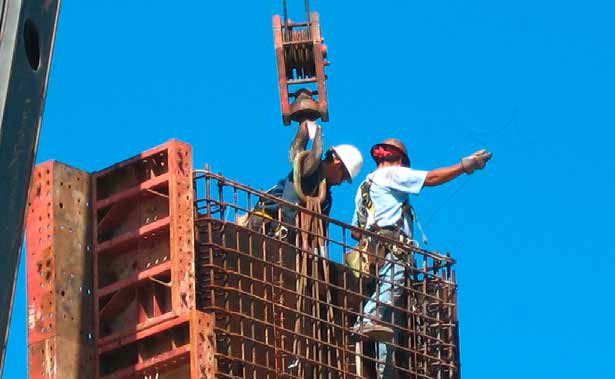

"Ensure of sufficient pre-disaster plans according to risks identified and that after any disaster, the needs of the affected are at the centre of recovery and reconstruction, with their support to design and implement rebuilding."
Cities are built by many entities over decades or centuries, and hence difficult to rebuild in a short period of time. There is continual tension between the need to rebuild quickly and to rebuild as safely and sustainably as possible. A well-planned and participatory recovery and reconstruction process helps the city reactivate itself, restore and rebuild its damaged infrastructure and recover its economy, empowering citizens to rebuild their lives, housing and livelihoods. Reconstruction must begin as soon as possible – in fact, cities can foresee needs, establish operational mechanisms and pre-assign resources before a disaster. Recovery and rehabilitation can be planned ahead of the disaster to a considerable degree. Leadership, coordination and obtaining money are key.
-
Provide shelter, food, water, communication, addressing psychological needs, etc post-event;
-
Limit and plan for any use of schools as temporary shelters;
-
Identify the dead and notifying next of kin;
-
Conduct debris clearing and management;
-
Take over abandoned property;
-
Build systems to help communities integrate disaster risk reduction into decisions they take to recover from the disaster, to reduce future vulnerabilities;
-
Take specific actions for recovery of sectors including livelihoods, health, education, critical infrastructure, environment and ecosystem, psycho-social support, cultural heritage and governance issues such as accountability, roles and responsibilities and corruption control;
-
Manage local, national and international aid and funding, and coordination of efforts and prioritizing and managing resources for maximum efficiency, benefit and transparency.
-
Undertake retrospective/post-disaster assessments to assess potential new vulnerabilities and build learning into future planning and response activities;
-
Promote business continuity and economic reboot.
-
Ensure that the recovery programmes are consistent and in line with the long-term priorities and development of the disaster affected areas;
-
Integrate further disaster risk reduction in all investment decisions for recovery and reconstruction.
The December 2004 tsunami completely destroyed approximately 100,000 dwellings in Sri Lanka and damaged 44,290. The State Task Force used an innovative owner-driven approach to support housing reconstruction, providing grants directly to the owners for reconstruction; owners supplemented this grant with other donations. Most activities related to planning, layout, design and construction were delegated to local beneficiaries, who were supported by technical staff, allowing groups of beneficiaries to negotiate their costs down. On the other hand, a donor-assisted programme that followed a contractor-driven approach, without involvement of the community, had much lower satisfaction rates. The owner-driven reconstruction produced more houses, more quickly, of better construction quality, and at less cost. Space standards were generally better and the designs, layouts, and locations more acceptable to beneficiaries. The programme appears to have fostered a cooperative local social fabric and institution.
Read the report at http://tinyurl.com/chjv6ps.
-
International Recovery Platform (IRP)
Consult the many resources on the IRP website, including case studies, tools and guidelines, recovery cases and reports and guidance notes. -
The Livelihood Assessment Tool Kit – ILO, FAO (2009)
Helps recovery actors assess the impact of disasters on people’s livelihoods and the capacities and opportunities for recovery. Use the website’s search engine to locate this resource by is title. -
A Handbook for Reconstructing after Natural Disasters. Safer Homes, Stronger Communities - GFDRR (2009)
A resource for reconstructing safer homes and stronger communities after natural disasters. -
Pre-disaster Planning for Post Disaster Recovery – Organization of American States (2000)
Examples from Antigua and Barbuda and Saint Kitts and Nevis of sectoral recovery plans in the Caribbean, which can be adapted to other scenarios. -
Aceh-Nias: 10 Management Lessons for Host Governments Coordinating Post-Disaster Reconstruction (Indonesia) – BRR (2009)
Valuable lessons from the Aceh-Nias tsunami experience across three different elements of reconstruction: organisation, execution and funding. -
Guidelines for Planning Gender-sensitive Post-disaster Reconstruction (2001)
These guidelines reflect the findings of international disaster researchers, first-hand reports from field workers and narrative accounts by disaster survivors.
